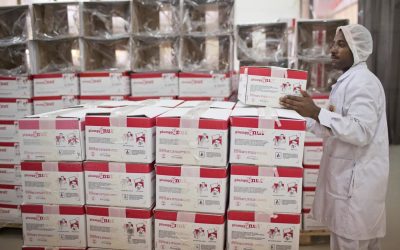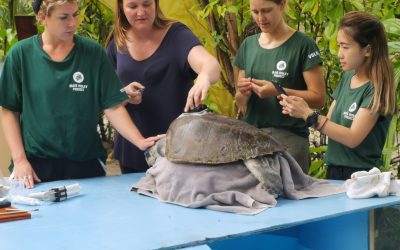The Hooded Grebe (Podiceps gallardoi) is a water bird endemic to Patagonia, Argentina. It has spectacular crimson eyes and a fascinating head-bobbing mating dance — similar to the Argentinian Tango. Their breeding grounds are located in the highland plateaus in the Western part of Santa Cruz province, however, there are now less than 400 breeding pairs left in the wild. Since discovering the Hooded Grebe in 1974, populations have crashed by as much as 95% in some locations. Subsequently, this species is now listed as Critically Endangered on the IUCN red list of threatened species.
Climate change is one of the main drivers behind the grebe’s population crash. The high elevation lakes at their breeding grounds are beginning to dry up, as less and less snow falls during the Argentinian winter. The grebes use the milfoil plant (Myriophillum sp.), which grows in the lakes, to make their nests and feed on amphipods (small crustaceans) that live in the lakes. Thus, climate change is causing a rapid decrease in key breeding and food resources. Additionally, introduced salmonids (Rainbow trout) are changing the structure of the grebe’s habitats and out-competing them for food. With Hooded Grebes already having a low reproductive rate (producing 1 chick each breeding season, very rarely 2 chicks), mortality rates are high as they are particularly susceptible to predation by invasive species. For instance, the introduced American mink has been known to kill large numbers within a single day, sometimes wiping out entire populations in some areas.
It is vital that we implement appropriate conservation strategies to save this species from the brink of extinction. The EDGE of Existence programme at the Zoological Society of London (ZSL) focusses on Evolutionarily Distinct and Globally Endangered (EDGE) species and has been supporting the Hooded Grebe Project in Patagonia. The EDGE programme offers early career conservationists funding , training and mentorship to help ensure the conservation of EDGE species through its Fellowship scheme.
To date, little is known about the migratory route of the grebe; they travel down from plateaus to spend winter in the coastal estuaries, yet we don’t know exactly where they go. On top of abnormal weather patterns, huge hydrodams are due to be built in this area over the next few years and it is not possible to implement appropriate conservation measures if we don’t know which areas they migrate to.
The Arribada Initiative provided funding to an EDGE of Existence expedition to purchase eight GPS tags from four different providers, four of which went on the expedition. With the support of the Erasmus Darwin Barlow fund, four of these tags were deployed on Hooded Grebes in Argentina in March 2018 to monitor and log the grebe’s migratory route for the very first time. Tagging these birds is very challenging, due to the remote and climatically challenging nature of their environment, and due to their small size (Hooded Grebes weigh less than 500g) and their diving behaviour. The tags required to meet the specific needs of the project are currently expensive, and as such are often unavailable to resource-poor conservationists. In partnership with ZSL’s EDGE of Existence programme, the Arribada Initiative seized the opportunity to achieve two goals. Firstly, to provide funding to purchase the tags in the immediate term, vital to progress the research necessary in the field, and secondly, to use this opportunity to review the deployment experience, usability and functionality of each commerical tag so we can better understand how a low-cost GPS / Argos open source reference design could be created to lower the cost of accessing future tags / biologging hardware and to feed this research into our own Arribada GPS tag development.
Prior to deployment, we designed and conducted a two-day workshop with 16 participants who assessed the usability of the GPS tags. Participants were firstly required to highlight their previous tagging experience, if any, using a visual analogue scale (VAS). Next, they were instructed to read the tag manual provided, program and deploy the tags, and then download the data. These steps were assessed using a system usability scale (SUS) with ratings of 1-5, where 1 was categorised as ‘very likely’ and 5 ‘very unlikely’. Additionally, participants noted the time it took to complete each step and were required to answer what they liked and didn’t like about each step. From this, we obtained invaluable data that will inform the routes we take in our own Arribada GPS tag development, based on what worked best.



I was wondering if I could get any more information on the status of this effort. I am planning similar work starting next year and would love to know how the tracking is going.
Hi Cory,
Thanks for getting in touch. The hooded grebe tagging and expedition was in 2017/2018, however since then we have partnered with the RSPB and via a National Geographic grant have produced a solar / Argos tag that we plan to test early next year. This may be a low-cost, open source solution to funding new efforts to understand the critical feeding grounds of the hooded grebes and to investigate how climate change may be affecting their habitat and breeding grounds.
Kind regards,
Alasdair